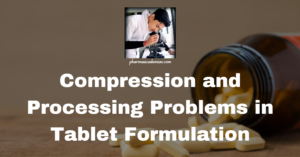Pathophysiology is the study of how diseases or abnormal conditions affect the normal functioning of the body’s organs and systems. It involves understanding the physiological processes that become disrupted or altered due to various pathological conditions. Here’s a detailed note covering the introduction and basic definitions used in pathophysiology:
Introduction to Pathophysiology
1. Definition: Pathophysiology is the study of the functional changes that occur in the body as a result of injury, disease, or abnormal conditions. It aims to understand the mechanisms underlying the development and progression of various health disorders.
2. Importance: Pathophysiology provides crucial insights into the underlying mechanisms of diseases, helping in diagnosis, treatment, and prevention. It forms the basis for clinical decision-making and the development of therapeutic interventions.
3. Scope: Pathophysiology encompasses a wide range of disciplines, including anatomy, physiology, biochemistry, pharmacology, immunology, and genetics. It integrates knowledge from these fields to comprehend the complex interplay of factors contributing to disease processes.
4. Approaches: Pathophysiological research employs various approaches, including experimental studies, clinical observations, epidemiological investigations, and computational modeling, to elucidate the underlying mechanisms of diseases.
5. Clinical Applications: Pathophysiological understanding informs medical practice by guiding diagnostic tests, interpreting clinical findings, selecting appropriate treatments, and predicting disease outcomes. It also serves as a basis for the development of novel therapies and interventions.
Basic Definitions in Pathophysiology
1. Homeostasis: Homeostasis refers to the body’s ability to maintain stable internal conditions, such as temperature, pH, and fluid balance, despite external changes. Disruption of homeostasis can lead to disease states.
2. Etiology: Etiology refers to the cause or causes of a disease. It can include genetic factors, environmental influences, infectious agents, lifestyle choices, and underlying physiological abnormalities.
3. Pathogenesis: Pathogenesis describes the process by which a disease develops and progresses within the body. It involves a sequence of events, including initiation, propagation, and resolution or chronicity of the disease process.
4. Risk Factors: Risk factors are characteristics or exposures that increase the likelihood of developing a particular disease. They can be genetic, environmental, behavioral, or demographic in nature.
5. Signs and Symptoms: Signs are objective manifestations of disease that can be observed or measured by healthcare providers, such as fever, rash, or abnormal laboratory findings. Symptoms are subjective experiences reported by patients, such as pain, fatigue, or nausea.
6. Diagnosis: Diagnosis involves identifying a disease or condition based on clinical evaluation, medical history, laboratory tests, imaging studies, and other diagnostic procedures.
7. Prognosis: Prognosis refers to the predicted course and outcome of a disease, including the likelihood of recovery, recurrence, or complications. It is influenced by factors such as disease severity, patient characteristics, and response to treatment.
8. Complications: Complications are adverse outcomes or secondary conditions that arise as a result of a primary disease or its treatment. They can have significant implications for patient management and overall prognosis.
9. Treatment: Treatment involves interventions aimed at alleviating symptoms, managing complications, and modifying the course of disease. It may include medications, surgery, lifestyle modifications, rehabilitation, and supportive care.
10. Prevention: Prevention strategies aim to reduce the incidence, prevalence, and impact of diseases through measures such as vaccination, health promotion, screening, early detection, and risk factor modification.

Understanding these basic definitions is essential for comprehending the complexities of pathophysiology and its clinical applications. It provides a foundation for healthcare professionals to effectively assess, diagnose, and manage various health conditions, ultimately improving patient outcomes and quality of life.




